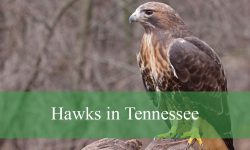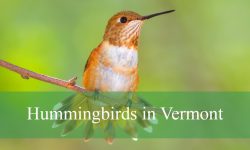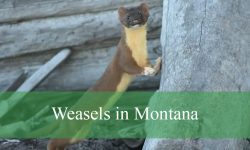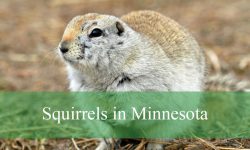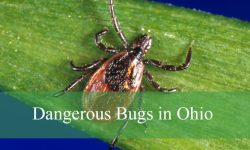Minnesota has many kinds of weasels. These small animals live in forests, fields, and near water. The types of weasels in Minnesota are different in size and habits.
Learning about these weasels helps you know how they live and what they eat. From the American Mink to the Least Weasel, each one is special and important for nature.
This article will tell you about six types of weasels in Minnesota. You will learn what they look like and where to find them. Knowing this makes it easier to see these animals outside.
Common Weasels Found in Minnesota
American Mink
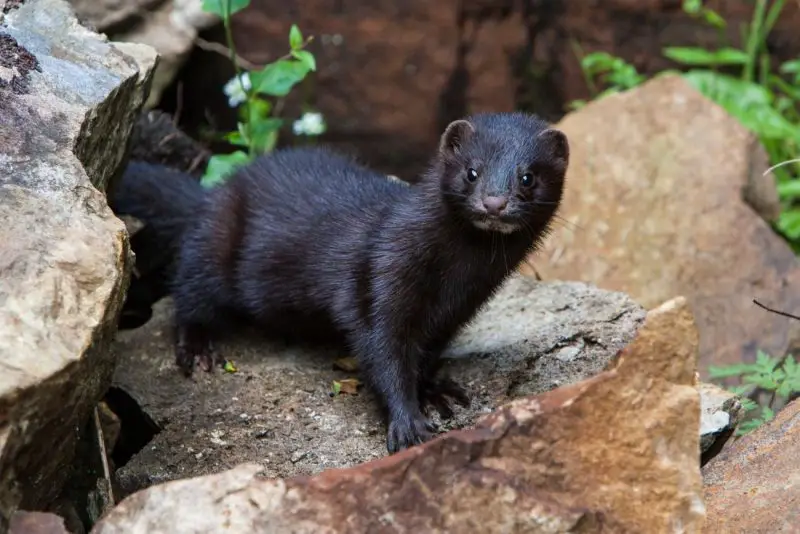
The American Mink (Neovison vison) is a sleek, medium-sized mammal known for its luxurious, dense, and waterproof fur that ranges from dark brown to nearly black. Its slender body, short legs, and long, bushy tail help it move efficiently both on land and in water. Adult minks typically measure between 14 to 18 inches in body length, with tails adding an additional 6 to 8 inches, and weigh roughly 1.5 to 3.5 pounds. Their webbed feet provide excellent swimming capability, allowing them to pursue prey underwater. Their fur’s water-repellent quality also insulates them in cold aquatic environments. The face features small, rounded ears and sharp eyes that are adapted for detecting movement in dim light near water bodies. These physical traits make the American Mink a highly effective semi-aquatic predator.
American Minks are carnivorous and have a diverse diet centered around aquatic and terrestrial prey. They mainly feed on fish, frogs, crayfish, birds, small mammals, and sometimes insects. They are opportunistic hunters that use their keen senses to locate prey along riverbanks, lakeshores, marshes, and wetlands. Their hunting style includes stalking, diving, and swift underwater chases. Active mostly during dawn and dusk, minks are solitary and territorial animals, often marking their range with scent glands. Their aggressive hunting behavior allows them to compete successfully with other predators in their habitat.
The preferred habitats of American Minks in Minnesota are riparian corridors—areas adjacent to rivers, streams, lakes, and wetlands. These locations provide both shelter and abundant food sources. Dense vegetation along waterways offers cover and den sites, while the aquatic environment supports a rich prey base. Minks often use burrows abandoned by other animals or natural crevices near water for nesting and raising young. Seasonal changes influence their activity; they tend to be more aquatic in warmer months and may shift to more terrestrial foraging in winter.
In Minnesota, the American Mink is widespread and relatively common throughout suitable aquatic habitats across the state. Their presence is most notable in northern and central Minnesota, where extensive water networks and wetlands provide ideal conditions. Human impacts such as trapping for fur and habitat modification have historically affected populations, but conservation regulations have helped maintain stable mink populations. Today, American Minks serve as important bioindicators for healthy freshwater ecosystems in the region.
Long-tailed Weasel and Least Weasel

The Long-tailed Weasel (Neogale frenata) and Least Weasel (Mustela nivalis) are two of the smallest members of the mustelid family found in Minnesota. The Long-tailed Weasel is characterized by a slender, elongated body measuring about 10 to 16 inches in length, with a notably long tail tipped in black. Its fur is brown on top with white or creamy underparts during summer, turning white in northern populations during winter to blend with snow. The Least Weasel, smaller and more delicate, measures under 10 inches and has a proportionally shorter tail. Like the Long-tailed Weasel, it can also molt to white in colder months. Both species have sharp teeth, bright eyes, and flexible bodies that allow them to enter small tunnels and dens.
Behaviorally, both weasels are highly active and agile hunters known for their fearless and relentless pursuit of prey. Their diet consists mainly of small rodents such as mice, voles, and shrews but can also include birds, eggs, and insects. They are known to enter burrows to hunt, making them important natural controllers of rodent populations. These weasels display territorial and solitary behavior, marking their territories with scent. They are primarily crepuscular or nocturnal, though daytime activity occurs, especially in less disturbed habitats. Their quick movements and small size make them elusive and difficult to observe in the wild.
In terms of habitat, Long-tailed and Least Weasels are highly adaptable and occupy a range of environments across Minnesota. They can be found in grasslands, open fields, forest edges, and agricultural lands. These environments provide both prey abundance and sufficient cover from larger predators. Their preference for edge habitats where forest meets open land allows them to exploit diverse food sources. The ability to live in proximity to human-altered landscapes, such as farms, enables them to thrive despite habitat changes.
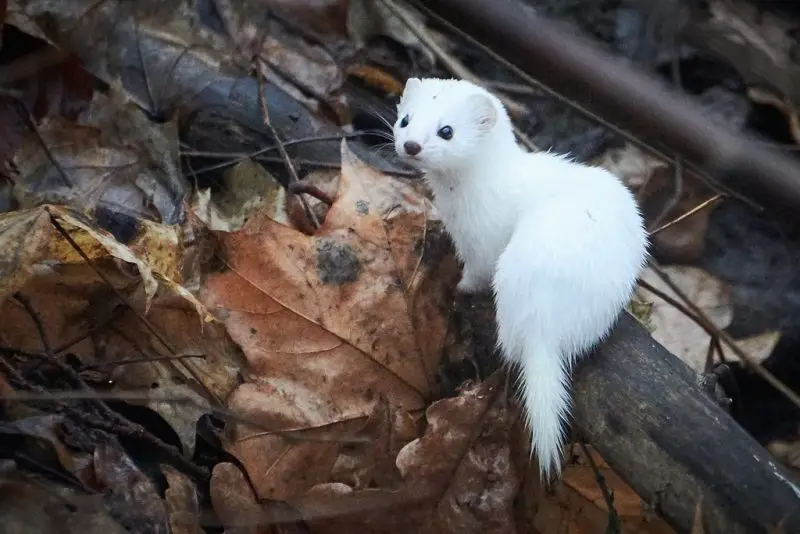
Geographically, both species are widely distributed throughout Minnesota. The Long-tailed Weasel is more common in southern and central parts of the state, while the Least Weasel tends to inhabit northern regions, especially in areas with seasonal snow cover. Their populations benefit from the mosaic of natural and managed habitats, although their small size and secretive habits make population assessments challenging. These weasels are an integral part of Minnesota’s ecosystems due to their role in maintaining the balance of small mammal populations.
Fisher

The Fisher (Pekania pennanti) is a large and powerful member of the weasel family, distinguished by its robust body measuring between 30 to 40 inches long, including a thick bushy tail that makes up about one-third of its length. Adult fishers weigh between 4 and 6 pounds and possess dense, dark brown to nearly black fur that helps them blend into the shadows of dense forests. Their sharp, retractable claws and muscular limbs make them excellent climbers and hunters. Fishers have large feet and a long body, adaptations that aid in traversing deep snow and rugged terrain. Their facial features include rounded ears and a pointed snout, along with keen eyesight and acute hearing suited for nocturnal hunting.
Fishers are carnivorous and have a varied diet that includes small to medium-sized mammals such as squirrels, rabbits, and snowshoe hares, as well as birds, eggs, insects, and carrion. Remarkably, they are one of the few predators capable of preying on porcupines, often flipping them over to attack the unprotected belly. Fishers are solitary and territorial, with home ranges that can cover several square miles. They are mostly crepuscular and nocturnal, using stealth and surprise to catch prey. Fishers tend to avoid human contact, preferring dense, mature forests with ample understory for cover and hunting.
Their habitat preferences in Minnesota consist mainly of mature coniferous and mixed forests, especially in northern and central parts of the state. These heavily forested areas provide dense canopy cover, fallen logs, and complex terrain that support their hunting and denning activities. Fishers use natural cavities, hollow logs, or abandoned squirrel nests for shelter and raising young. The forest environment also supports their prey base, which is abundant in these ecosystems. Seasonal changes affect fisher activity and diet, with more ground-based hunting during winter months.
Fishers were once heavily trapped for fur and faced population declines, but today their numbers have rebounded due to conservation efforts and habitat protection in Minnesota. They play an important ecological role as mid-level predators regulating prey populations and maintaining forest health. Fishers are indicators of healthy, intact forest ecosystems and continue to be a species of interest for wildlife biologists and conservationists monitoring northern forest biodiversity.
Striped Skunk

The Striped Skunk (Mephitis mephitis) is a medium-sized mustelid well known for its distinctive black fur with two broad, white stripes that begin at the head and run along the back, sometimes merging into a single stripe. Adults measure 20 to 30 inches in length, including a fluffy tail, and weigh between 4 to 10 pounds. They have a stocky body, short legs, and a small head with sharp teeth, though their primary defense mechanism is the ability to spray a potent and foul-smelling musk from glands near the tail. This spray deters predators and is effective even at long distances. Skunks have keen senses of smell and hearing but relatively poor eyesight.
Striped Skunks are omnivorous and opportunistic feeders, with a diet that includes insects, small mammals, birds, eggs, fruits, and plant matter. They are nocturnal foragers, using their sensitive paws to dig in the soil for insects and grubs. Skunks are generally solitary except during mating season or when females rear their young. Their burrows are often dug in abandoned dens, hollow logs, or brush piles. They rely on their musk spray for defense rather than fleeing, and usually give warning signals such as stomping their feet before spraying.
In Minnesota, Striped Skunks inhabit a wide range of environments, from open grasslands and farmland to suburban and urban areas. They are adaptable animals able to live near humans, scavenging in garbage and taking advantage of gardens and pet food left outdoors. Their ability to tolerate disturbed habitats has allowed them to maintain stable populations despite habitat fragmentation. Skunks are important for controlling insect and rodent populations in agricultural and residential areas.
Striped Skunks in Minnesota are widespread across the state, found in rural, suburban, and even some urban settings. They are most active in spring and summer, with reduced activity during winter when they enter a state of torpor but do not truly hibernate. Although they can be a nuisance due to their smell and occasional predation on poultry or pets, skunks contribute positively to local ecosystems by consuming large quantities of pest insects and rodents.
American Badger

The American Badger (Taxidea taxus) is a robust and muscular mustelid characterized by a broad, flattened body, short powerful legs, and large digging claws. Adults measure between 20 to 34 inches in body length with an additional 4 to 7-inch tail, and weigh between 8 to 15 pounds. Their fur is grayish-brown with distinctive facial markings: a broad white stripe runs from the nose over the head, contrasted by dark patches around the eyes. This coloration provides effective camouflage in their open habitat. Their strong jaws and teeth allow them to capture and consume burrowing prey. Badgers have a stocky build optimized for digging extensive tunnel systems underground.
Behaviorally, American Badgers are solitary, mostly nocturnal or crepuscular animals that spend significant time underground in their dens. They are skilled excavators, using their powerful forelimbs to dig burrows for shelter and hunting. Their diet consists primarily of small to medium-sized ground-dwelling mammals, such as ground squirrels, pocket gophers, mice, and occasionally reptiles and insects. Badgers have a methodical hunting style, often digging into burrows to flush out prey. They are territorial and use scent marking to communicate with other badgers.
In Minnesota, American Badgers prefer open habitats such as prairies, grasslands, and agricultural fields where the soil is suitable for digging. Their range in the state is primarily concentrated in the western and southern regions where these habitat types dominate. Badgers rely on a mosaic of open land and scattered shrubs or trees for shelter and hunting. They contribute significantly to ecosystem health by controlling populations of burrowing rodents, which can be agricultural pests.
American Badgers face threats from habitat loss and road mortality but remain relatively stable in Minnesota due to the availability of suitable habitats and legal protections. Their elusive nature makes them less frequently observed, but their ecological role as effective fossorial predators underscores their importance in maintaining balanced rodent populations in prairie and farmland ecosystems.
When and Where to See Weasels in Minnesota
Observing weasels and other mustelids in Minnesota requires understanding their habits, preferred habitats, and activity patterns throughout the year. Most species, including the American Mink, Long-tailed Weasel, Least Weasel, Fisher, Striped Skunk, and American Badger, tend to be elusive and secretive, making sightings relatively rare without patience and knowledge of their preferred environments. These animals are primarily crepuscular or nocturnal, meaning they are most active during dawn, dusk, and nighttime hours, which is the best time to spot their movements or hear their calls.
The American Mink is often seen near water bodies such as rivers, streams, ponds, and wetlands, especially during the warmer months when their prey—fish, amphibians, and aquatic insects—is abundant. Spring and early summer are ideal times to observe minks as they increase activity for breeding and raising young. Long-tailed and Least Weasels favor open fields, grasslands, and forest edges where they hunt small rodents, and they can be glimpsed throughout the year, though they are more visible during the day in winter when snow cover exposes their movement trails.
Fishers are forest dwellers primarily inhabiting mature coniferous and mixed forests of northern and central Minnesota. Sightings are rare but possible in late fall and winter when fishers increase ground foraging due to snow depth limiting arboreal prey. Patience and quiet hiking on forest trails during these cooler months improve chances of encountering or detecting fisher activity. Striped Skunks are more adaptable and commonly seen in rural, suburban, and even urban areas throughout Minnesota. They are most active during spring and summer nights, often spotted crossing roads or foraging in yards and fields.
American Badgers prefer open prairie and grassland habitats predominantly in western and southern Minnesota. They are most observable during late spring and early summer when they are actively digging for food and raising offspring. Early morning or late evening along rural roads and in farmlands may offer glimpses of badgers crossing or foraging. Overall, the best strategy for seeing these elusive mustelids involves visiting their favored habitats during dawn or dusk, using patience, and sometimes relying on motion-activated cameras or guided wildlife tours focused on Minnesota’s diverse mammal fauna.

